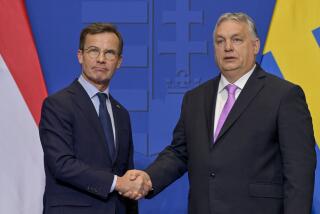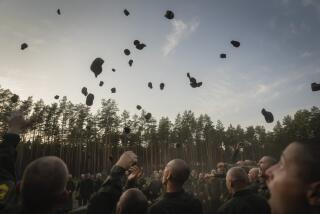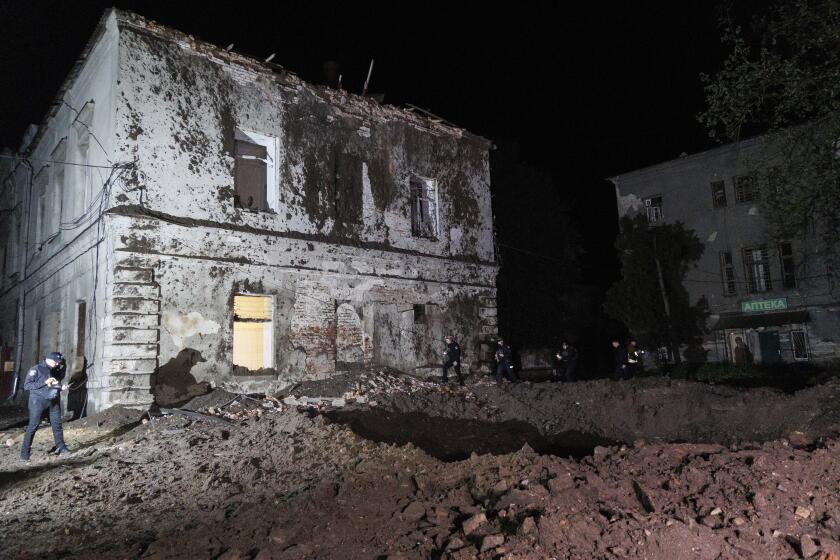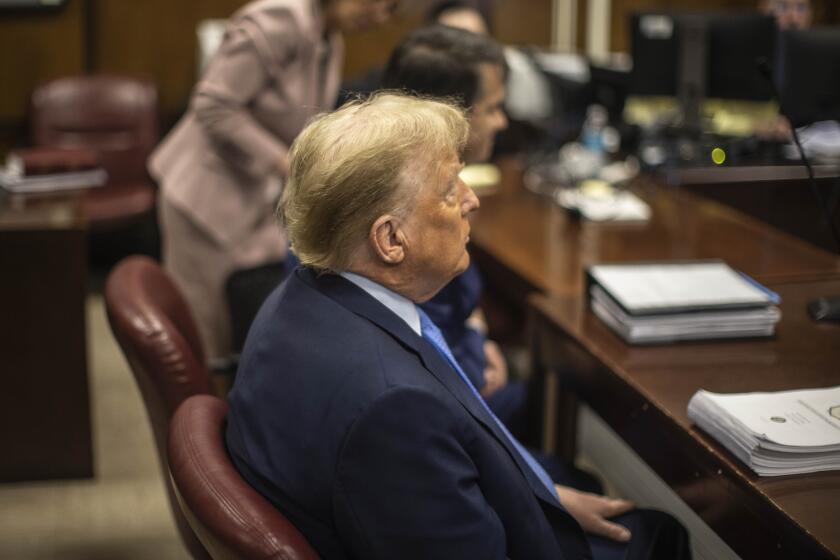As Finland considers NATO membership, citizens mobilize for an invasion by Russia
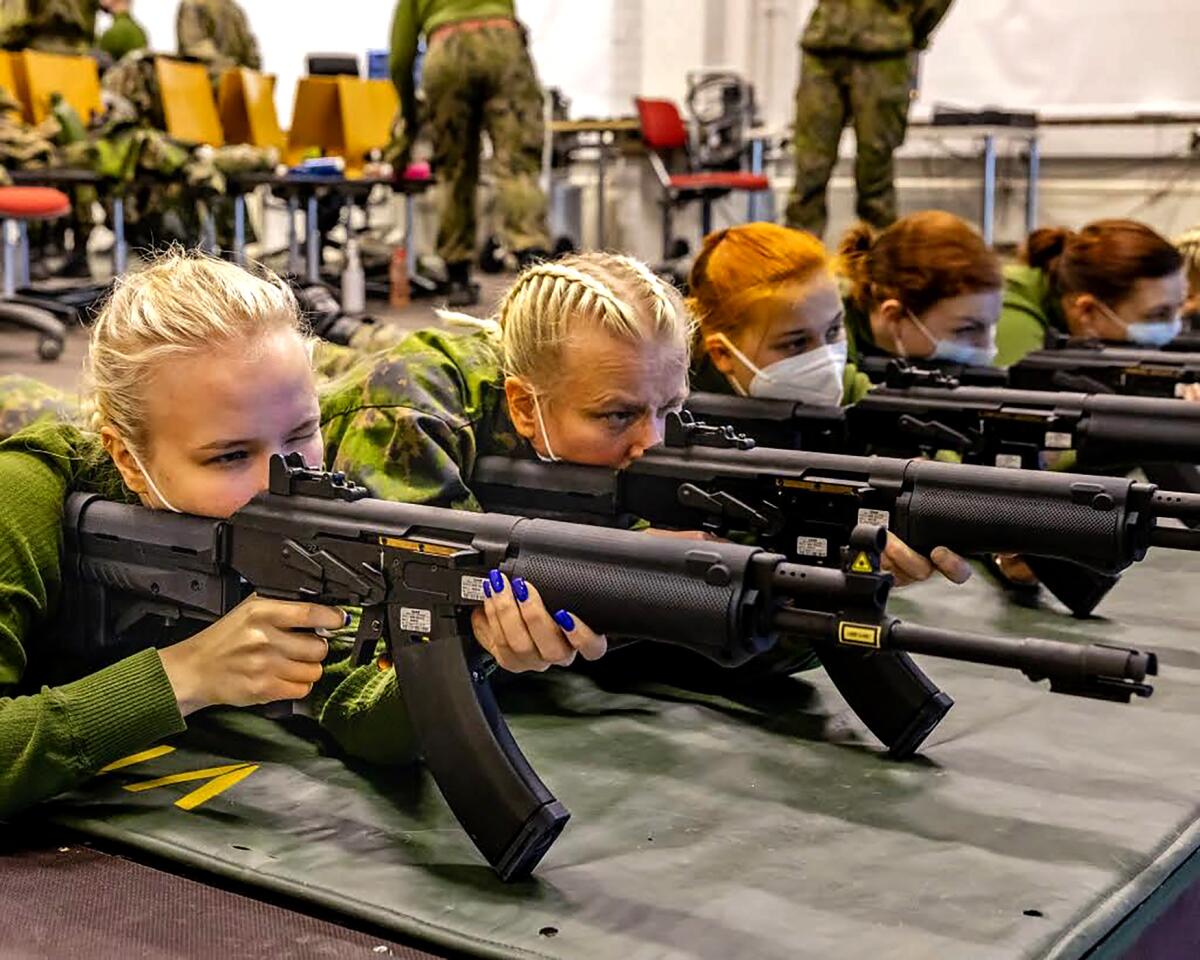
When the Finnish Reservists’ Assn. recently announced wartime defense courses for civilian women in the southern town of Haemeenlinna, the 400 slots filled almost immediately, with a waiting list of 500 more.
Topics will include shooting, cybersecurity and how to manage the first several days of an invasion from abroad.
“I wouldn’t call it fear,” said Sgt. Sonja Airikki, a 39-year-old reservist who will lead the training next month. “It’s more about being prepared.”
Military readiness is ingrained in the culture of this country of 5.5 million people that shares an 833-mile border and a long, complicated history with Russia.
The relationship has grown increasingly tense since Russia invaded Ukraine two months ago. For the first time, Finland is considering seeking membership in NATO, prompting threats of retaliation from Russian President Vladimir Putin.
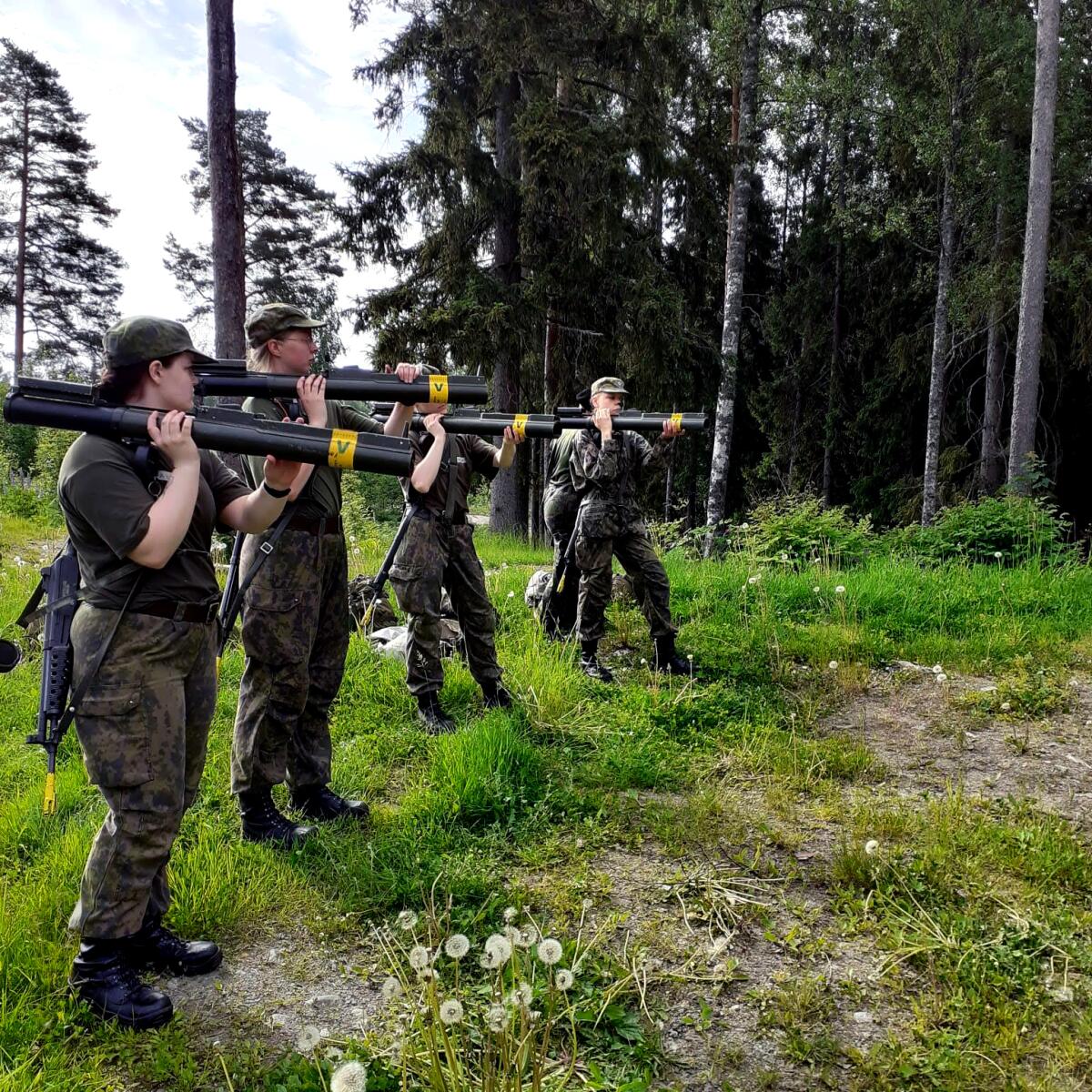
The reservists group is primarily responsible for keeping its call-up soldiers ready for war. Its civilian classes — like those Airikki leads — have always been popular, but nothing prepared it for the nationwide enrollment spike since the attack on Ukraine.
“The change has been enormous,” said Ilpo Pohjola, a top official with the association who has been with it since its inception almost 30 years ago. “It’s something very special. I haven’t seen anything like this before.
“We have known for 100 years that there is evil on the opposite side of the border, but now I think people have woken up,” he said. “They understand that we must be prepared.”
Wariness of Russia dates back to 1809, when Russia added Finland to its empire after winning it in a war with Sweden. Finland declared independence in 1917, while Russia was distracted by revolution, but 22 years later the Soviets invaded.
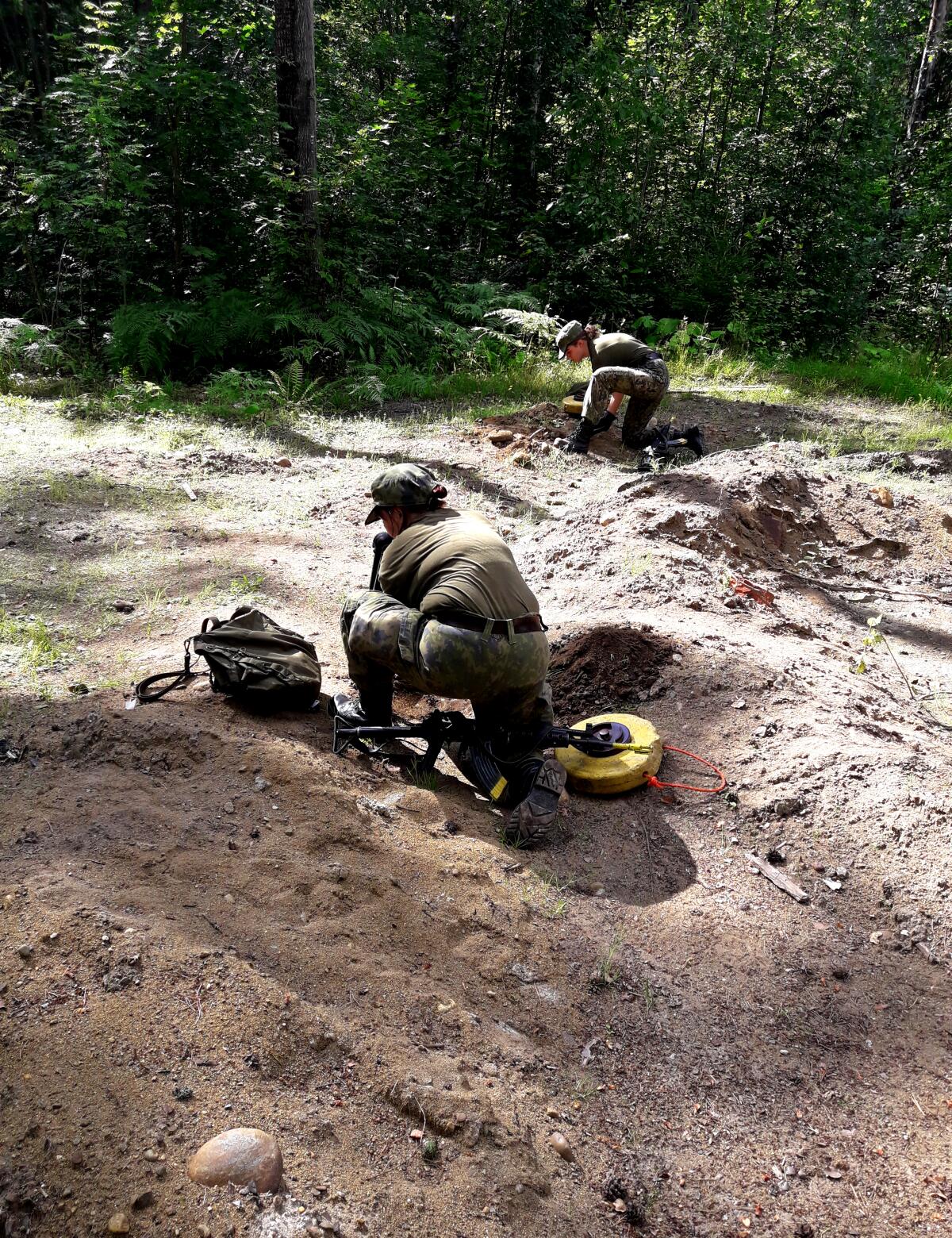
The Finnish army was vastly outnumbered, but using snipers to terrorize enemy soldiers in the frozen forests and Molotov cocktails — its own invention — to attack their tanks, it fended off the Soviets in two separate wars.
In the end, Finland signed a peace treaty — the Moscow Armistice of 1944 — that ceded about 10% of the country to the Soviets.
The Cold War brought an uneasy coexistence with the Soviet Union that caused Finland to cool relations with the United States and the West in an effort to remain free and Western.
Finland traded more with the Soviets than any Western country and even flew their MiG-21 fighter jets for a time.
After the breakup of the Soviet Union, appeasing Russia continued as a pragmatic survival tactic. As a matter of foreign policy, Finland would point out its allies but never publicly mentioned its enemies, even if there was only one and everyone knew who it was.

That changed when Russia invaded Ukraine.
“Now masks have been removed,” Finland’s president, Sauli Niinisto, said on the day of the attack. “Only the cold face of war is visible.”
Asked by the national newspaper Ilta-Sanomat last month to name the biggest threat to the country, 74% of respondents said Russia — up from 15% last year.
Suddenly, Finland was talking about joining the North Atlantic Treaty Organization. On no other issue has public opinion swung so drastically. As late as 2017, when the country celebrated its centennial, only 19% of the population favored joining the defense alliance. Polls show that figure is now 68%.
Pundits have predicted it could rise to 80% should the country’s leaders endorse the idea. Prime Minister Sanna Marin and her government have yet to take a position.
For Finland to join NATO, the Finnish Parliament must vote to apply and all 30 members of the alliance must vote in favor of the application. Only then would Finland be covered by NATO’s most important provision, Article 5, which states that an attack on one ally is an attack on all.
Putin hasn’t said how he would retaliate if Finland were to become a member, but experts suggested that economic sanctions, cyberattacks or even military action were likely. The question for lawmakers is whether the risks of not joining are greater than the risks of doing so.
Speaking to reporters this month, Foreign Minister Pekka Haavisto said that the invasion of Ukraine had revealed Russia to be a dangerous aggressor, capable of mobilizing 100,000 soldiers against a neighboring country and perhaps even making good on its threats to use nuclear or other unconventional weapons.
“People in Finland are concerned about what if we see these type of weapons used. What is our response? How do we protect our people?” he said. “These are the issues that have changed.”
Charly Salonius-Pasternak, a defense specialist at the Finnish Institute of International Affairs, a government-funded think tank, said Haavisto’s words marked a Rubicon-crossing moment in Finland’s relationship with Russia.
“It may not be dramatic to most people outside Finland, but in Finnish politics to say that Russia is a potential threat and the cause for reevaluating our security policy is quite dramatic,” he said. “It was always obvious, but to say it is quite new.”
In many ways, Finland has always been preparing for war with Russia.
There are more than 5,000 bomb shelters throughout the capital, Helsinki. The extensive subway system — which features a swimming pool, a museum, shops and restaurants that have made it a playground — also includes emergency shelters and an estimated two-week supply of food that could protect the city’s population of 630,000 should Russia attack again.

With an army of 280,000 soldiers and 900,000 reservists, Finland already spends more than 2% of its gross domestic product on defense — the NATO target that the majority of its members fail to meet.
It is also one of the few countries in the European Union that requires all men to serve in the military — or perform other national service — when they turn 18.
In polls, about 80% of Finns say they stand ready to defend their country, one of the highest rates in the world. The national character, galvanized during the Soviet invasions, is reflected in the Finnish word “sisu,” meaning determination, stoicism, perseverance, strength of will, and never backing down in the face of adversity.
“It’s a big deal to be a Finn,” said Janne Kuusela, director general of the Defense Ministry’s policy division. “On one hand we have created a society which the U.N. many times over has concluded that Finland is the happiest nation on Earth. Sometimes that surprises us, but we very much like our country and our society and understand on the other side of the coin that everyone here needs to be prepared to defend it.”
Finnish public broadcaster Yle reported last week that since late February the military supply store Varusteleka has seen an 80% jump in sales.
The Finnish Reservists’ Assn. expects its membership to double this year to 100,000. About 90% of members are reservists and the rest are civilians. All its classes for 2022 are full.
The Defense Ministry released a statement Thursday saying it “urgently” wants to change its policy to allow civilians who enroll in the shooting courses to use military weapons and ammunition, with supervision from the army.
“When people enroll, we don’t ask why they are here,” said Airikki, the trainer leading the course for women in Haemeenlinna.
“I’ve been reading on Facebook pages for moms about their concerns,” she said.
“A lot more people are aware of the possibilities of war. It’s not said out loud, but reading between the lines you can see that people are concerned.”
Hunt is a special correspondent.
More to Read
Start your day right
Sign up for Essential California for news, features and recommendations from the L.A. Times and beyond in your inbox six days a week.
You may occasionally receive promotional content from the Los Angeles Times.

